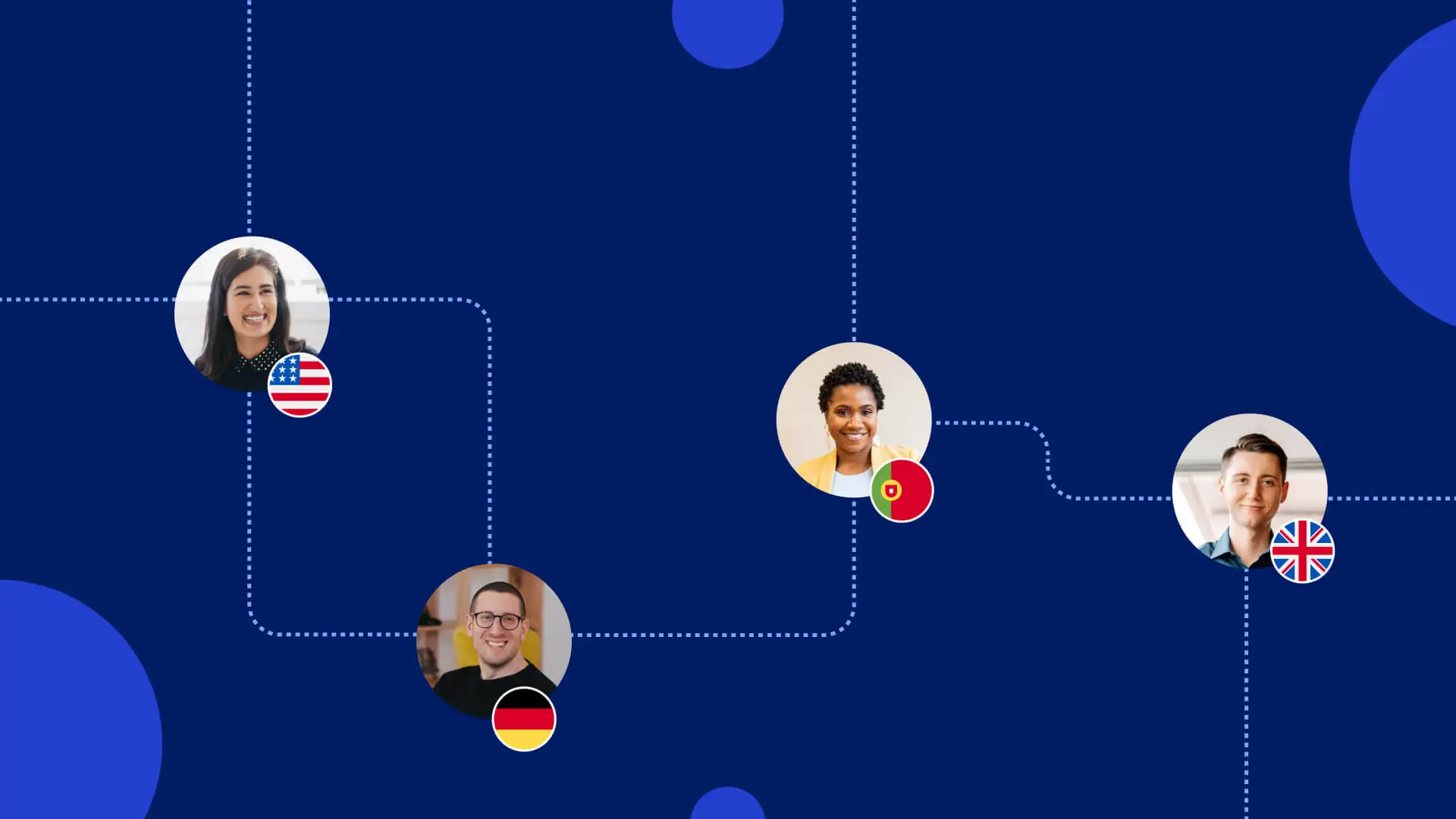Workforce planning lies at the heart of organizational success: Organizations thrive by aligning their personnel with their business objectives, and it’s crucial that the right talent is used at the right place.
Workforce planning goes beyond recruitment: It’s about anticipating requirements, optimizing usage of the available workforce, and mitigating risk. However, modern workplaces have become complex—given that a workforce may operate remotely or could be a mix of full-time employees and contractors.
With transformative technologies such as predictive analytics and AI-powered systems, more and more organizations are addressing their workforce needs with greater precision.
What’s workforce planning?
Workforce planning is the strategic process of aligning an organization’s human capital needs with its overall business objectives. It encompasses analyzing current workforce capabilities, predicting future needs, and developing strategies to ensure that the right talent is available at the right time and place to achieve organizational goals.
And why is it important?
The significance of workforce planning lies in its ability to:
- Anticipate future needs: Analyze trends in the labor market, business environment, and internal factors, and forecast the future workforce requirements for an organization.
- Optimize talent usage: Identify gaps in skills and competencies within the organization, so that you can devise strategies to address them and ensure that talent is utilized effectively.
- Enhance organizational agility: Position the right talent in the right roles on time. This gives you insights to respond more effectively to changes in the market, technology, and other external factors.
- Mitigate risks: Proactively address potential risks such as talent shortages, succession gaps, and skill deficiencies.
Modern workforce planning tools
Modern workforce planning relies heavily on advanced software and technologies to gather, analyze, and interpret data effectively. Some of the latest tools and technologies that facilitate effective workforce planning include:
- Workforce planning software: Early versions of workforce planning software helped manage people and the tasks they were working on. Today, workforce planning tools go far beyond that. They help business leaders collect and use financial and operational data to optimize proficiency and productivity for a strategic advantage.
- Predictive analytics: These utilize historical data, statistical algorithms, and machine learning techniques to forecast future workforce trends and outcomes. They can help organizations predict talent needs, identify potential skill gaps, and optimize workforce strategies.
- AI-powered talent management systems: These leverage machine learning algorithms to automate various aspects of workforce planning, such as candidate sourcing, performance evaluation, and succession planning. They can analyze large volumes of data to identify patterns and insights that inform talent decisions.
- People analytics platforms: These combine HR data with other business data sources to provide comprehensive insights into workforce performance, productivity, and engagement. They enable organizations to identify high-performing employees, assess the effectiveness of talent management initiatives, and optimize workforce strategies.
- Skills mapping tools: These help organizations identify the skills and competencies present within their workforce and assess gaps in skills required for future roles. They use data analysis techniques to match employees’ skills with job requirements and recommend training and development programs to address skill deficiencies.
- Scenario planning software: These allow organizations to simulate different scenarios and assess the potential impact of various workforce strategies on business goals. They enable HR professionals to explore different possibilities, such as workforce restructuring, expansion plans, or mergers and acquisitions, and evaluate their implications on talent needs and costs.
By leveraging the right tools, organizations can enhance their workforce planning capabilities and build a resilient and future-ready workforce.
Workforce planning for different business sizes
Workforce planning strategies and tools can vary significantly between small businesses and large enterprises due to differences in scale, resources, and organizational complexity. Here’s how they differ:
Scope and complexity
- Small businesses: Workforce planning in small businesses tends to be more straightforward and focused on immediate needs. These organizations have fewer employees and simpler structures. So they rely on informal methods such as spreadsheets, basic HR software, or manual processes.
- Large enterprises: Workforce planning in large enterprises is more complex and cover a broader range of considerations. Larger organizations often have multiple business units, geographically dispersed teams, and diverse workforce demographics, requiring more sophisticated tools and strategies to manage workforce planning effectively.
Data availability and analysis
- Small businesses: Due to resource constraints, they may have limited access to workforce data and analytics capabilities. So they rely on basic data sources such as payroll records, employee surveys, and performance evaluations to inform workforce planning decisions. Data analysis may be conducted manually or through simple tools like Microsoft Excel.
- Large enterprises: These have access to a wealth of workforce data from various sources, including HRIS (Human Resources Information Systems), applicant tracking systems, performance management software, and employee surveys. They leverage advanced analytics techniques such as predictive modeling, machine learning, and data visualization to derive insights from large datasets and make data-driven decisions.
Strategic alignment
- Small businesses: Workforce planning may be more reactive and ad hoc, driven by immediate operational needs and short-term goals.
- Large enterprises: Workforce planning is more strategic and aligned with long-term business objectives. It involves forecasting future workforce needs, identifying critical talent pipelines, succession planning, and developing talent management strategies to support organizational growth and sustainability.
Emerging trends in workforce planning
Over the decades, workforce planning has undergone enormous transformations spurred by digitization, data analytics, and automation. Of course, there are other factors that contribute to these changes: climatic changes, pandemics that show up uninvited, emerging technology, and so on.
In this section, we’ll discuss some of the top trends that are impacting workforce strategies globally.
Remote work
The widespread adoption of remote work, accelerated by technological advancements and the COVID-19 pandemic, has transformed traditional workforce planning. Organizations now need to consider the implications of remote work on talent acquisition, employee engagement, performance management, and workforce policies.
Workforce planning strategies must accommodate flexible work arrangements, ensure access to necessary technology and resources, and address challenges related to communication, collaboration, and work-life balance in remote settings.
Gig economy
The rise of the gig economy, characterized by short-term contracts and freelance or independent work arrangements, has led to a shift in how organizations source and manage talent.
Workforce planning strategies need to account for the growing contingent workforce and develop mechanisms to effectively integrate gig workers into the organization. This includes strategies for talent acquisition, onboarding, performance management, and compliance with labor regulations.
Diversity and inclusion initiatives
Organizations are increasingly recognizing the importance of diversity and inclusion (D&I) in driving innovation, creativity, and organizational performance. Workforce planning strategies must prioritize D&I initiatives to ensure a diverse talent pipeline, foster an inclusive work environment, and mitigate biases in talent management processes.
Skills-based hiring and development
With rapid advancements in technology and evolving job roles, there is a growing emphasis on skills-based hiring and development. Workforce planning strategies need to focus on identifying and assessing the skills and competencies required for current and future roles, rather than relying solely on traditional qualifications or job titles. This includes leveraging skills assessments, competency frameworks, and predictive analytics to match individuals’ skills with job requirements, identify skill gaps, and prioritize training and development initiatives to address those gaps.
Agile roadmaps
Traditional workforce planning processes often involve long-term projections and rigid workforce structures that may not be well-suited to today’s dynamic and uncertain business environment. Agile workforce planning emphasizes flexibility, adaptability, and iterative decision-making to respond quickly to changing business needs. This involves regularly reviewing workforce plans, scenario planning, incorporating feedback from stakeholders, and adjusting strategies and resource allocations as needed to align with evolving business priorities.
Ambitious organizations must identify and incorporate these trends in workforce planning efforts to attract, retain, and develop a diverse and skilled workforce capable of driving sustainable growth and innovation.
What does the future hold?
Keeping these emerging trends in mind, workforce planning for the future is poised for a major transformation. Strategies for the future will be driven by technological advancements, labor market shifts, and changes in organizational design – all of which are evolving every day.
Building a future-ready workforce plan is not going to be easy. That’s why organizations need agile digital tools that are already geared to handle future demands.
- AI and data analytics: Workforce planning will increasingly leverage AI and advanced data analytics to drive insights and decision-making. AI-powered tools will automate routine tasks, enhance data accuracy, and enable more proactive and data-driven workforce planning processes.
- Remote work and distributed teams: Organizations will need to adapt their workforce planning processes to accommodate flexible work arrangements, virtual collaboration tools, and the need to manage talent across different locations and time zones. Workforce planning efforts will focus on ensuring equitable access to opportunities, promoting employee engagement and well-being, and building virtual leadership capabilities.
- Skills-based talent management: Workforce planning will shift towards a more skills-based approach to talent management. Organizations will prioritize identifying and developing critical skills and competencies required for future roles, rather than focusing solely on job titles or qualifications. Skills assessments, competency frameworks, and personalized learning initiatives will play a crucial role in identifying skill gaps, upskilling and reskilling employees, and building a future-ready workforce.
- Agile workforce planning: Organizations will adopt iterative planning cycles, scenario-based modeling, and real-time data analysis to adjust workforce strategies in response to emerging trends, disruptions, and opportunities. Agile workforce planning will enable organizations to build resilience, foster innovation, and maintain competitive advantage in a rapidly evolving business environment.
- Diversity, equity, and inclusion (DEI) integration: DEI considerations will be integrated into all aspects of workforce planning, from talent acquisition and development to performance management and succession planning. Organizations will prioritize building diverse and inclusive workforces that reflect the demographics of their customer base and the communities they serve. Workforce planning efforts will focus on eliminating biases in talent processes, promoting diversity in leadership positions, and creating inclusive workplace cultures where all employees can thrive and contribute to their full potential.
Modern workforce planning – real success stories
Some companies have already remodeled their workforce planning strategies with an eye on the future. These are real-world success stories that can act as a benchmark for others who are looking to adapt their workforce plans to meet changing business conditions.
- IBM: This global IT giant has been at the forefront of using data analytics and AI to transform its workforce planning. With HR analytics, IBM can predict future workforce needs based on factors such as retirement projections, skills gaps, and business forecasts. With this approach, they can proactively identify talent needs, develop targeted training programs, and optimize workforce allocation, leading to increased efficiency and productivity.
- Salesforce: The champions in cloud-based software are committed to D&I in its workforce planning efforts. The company has implemented a variety of initiatives to promote diversity and equity, including unconscious bias training, mentorship programs, and employee resource groups. Salesforce also uses data analytics to track diversity metrics, identify areas for improvement, and hold leaders accountable for achieving diversity goals. As a result, they have been recognized as a leader in D&I within the tech industry.
- Walmart: The global retail behemoth has embraced agile workforce planning strategies to adapt to changing consumer preferences and market dynamics. The company uses real-time data analytics to monitor customer demand, adjust staffing levels, and optimize store operations. Additionally, they have invested in workforce development programs, such as training academies and tuition assistance, to upskill employees and prepare them for future roles within the company. As a result, Walmart has been able to increase employee engagement, improve customer satisfaction, and drive business growth.
Integrating workforce planning tools with HR systems
What’s the point of having a great tech stack, when the tools don’t talk to each other? Data in silos are almost as good as no data. Integration between workforce planning tools and other HR systems is crucial for seamless operation and maximum effectiveness. By integrating these systems, organizations can:
- Streamline data management: Automatic exchange of data between workforce planning tools and HR systems, eliminating the need for manual data entry and ensuring data consistency across platforms
- Enhance accuracy: Planning decisions based on accurate and up-to-date data, which reduces errors and improves reliability
- Improve decision-making: Access to comprehensive data from various HR systems to make more informed decisions
- Increase efficiency: Streamlined workflows and reduced administrative overhead through automated processes like data synchronization, report generation, and analysis
- Facilitate collaboration: Seamless collaboration between different departments and stakeholders involved in workforce planning, fostering alignment, transparency, and communication across the organization
- Enable real-time insights: Real-time access to workforce data, allowing organizations to monitor key metrics, track progress, and adjust strategies promptly in response to changing business needs
- Optimize resource allocation: Align workforce planning efforts with other HR functions such as recruitment, onboarding, training, and performance management, ensuring that resources are allocated efficiently to meet organizational goals
Multiplier – Your perfect HR assistant for workforce planning
Multiplier’s all-in-one platform is designed to take care of all your workforce planning needs from under roof. It easily integrates with your existing enterprise-wide systems, giving you a unified, real-time view of your finance workflows and approvals.
With Multiplier, you can:
- Hire talent from across the globe: Multiplier’s employer of record (EOR) solution enables you to hire talent from anywhere in the world. It acts as the employer of record on papers so you don’t need a business entity in every country you hire.
- Manage payroll and benefits for a global employee base: Error-free, hassle-free and on-time payroll every month of the year for employees set up anywhere in the world.
- Track employee productivity: Multiplier’s timesheet tracking feature allows you to track employee login and logout times, so you can easily intervene in case of adverse productivity trends or absenteeism patterns.
- Draft employment contracts in 100+ languages: When you hire globally, you’ll also want to write employment contracts in local languages around the world. Multiplier makes this a breeze for you.
- Never worry about HR compliance again: Even if you don’t have a business entity in every country you hire from, compliance will be easy. Multiplier has tax and legal experts stationed in 150+ companies to ensure you are compliant with local laws and regulations.
- Make a great first impression with candidates: You can onboard new hires from across the globe seamlessly at the comfort of a single interface. Send out forms and contracts and enable them to digitally sign the docs and send it back to you.
Hiring international talent without worrying about the risks of compliance or operational efficiency was never been so easy before.
If Multiplier sounds like the tool for you, talk to our experts to find out more.







